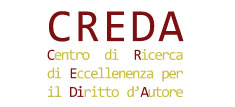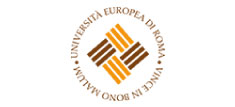La Commissione europea in data odierna ha apportato una modifica significativa al programma di lavoro…
The EU trademark reform has reached the final steps
di Sara Caselli (via Iplens.org) The reform of the European trademark system may become a reality before the end of 2015. In addition to the Commission Regulation no. 2869/1995 on the fees payable to the Office for Harmonization in the Internal Market, the reform package presented by the Commission on March 2013 focuses, as known, the Trademarks Directive 2008/95/EC and the Community Trademark Regulation 2009/207/EC. The Commission’s “Proposals” are based on the “Study on the Overall Functioning of the European Trade Mark System” (available here), realized by the Max-Planck Institut of Munich upon request of the same Commission and published on February 2011. The Proposals aim at modernizing and harmonizing the community and national trademark’s systems (by simplifying the registration procedure and intervening on the substantive law) as well as at strengthening the enforcement of counterfeiting. On June 10th 2015, the Council’s Permanent Representatives Committee has approved the final compromise texts of the trademark reform package, and on June 16th 2015 the compromise agreement has been voted by the Parliament’s Legal Affairs Committee. The final text of the Regulation can be found here, while the final text of the Directive is here. The approved texts are actually not yet absolutely “final” as they still need to go through the legal-linguistic revision before the final endorsement by the Council and by the European Parliament. So, unless there are further delays, while most of the provisions of the Regulation will come into effect in early 2016, the Member States will have three years to transpose the Directive into national law. The new features introduced by the reform range from formal ones, such as the adoption of the names “european trademark” instead of “community trademark” and “European Intellectual Property Office” instead of “Office for Harmonization in the Internal Market” and the reducing of registration fees, to substantive ones, such as the rejection of the requirement of the graphic representability, the extension of the absolute grounds of refusal or invalidity of the registration provided for signs constituted by a shape to signs constituted by “another characteristic”, the addition to the provision concerning the rights conferred by the registered trademark of the specification that the owner of the trademark may also prohibit the use of the sign in comparative advertising if made in a way which is contrary to the Directive 2006/114/EC and the introduction of provisions on the goods in transit in the EU. Even if the reform presents some positives, it is not exempt from criticism. Inter alia, by reducing registration fees of community trademarks it maintains the community and the national trademarks systems in competition. Also, by extending the provisions on the shape trademarks to sign constituted by other characteristics, the revision makes non-traditional trademarks harder to register. This kind of trademarks will indeed not be registrable if they exclusively consist of a characteristic (such as, for example, a sound or a smell) which can be considered imposed by the nature of the product, or necessary to obtain a technical result or giving substantial value to the product. But the most discussed and criticized provision is the one providing that the trademark owner is entitled to prevent third parties from bringing fake goods, in the course of trade, into the Member State where the trademark is registered. First of all, because the text has udergone many changes and, secondly, because its last version provides that the entitlement of the owner shall lapse if during the proceedings to determine whether the registered trade mark has been infringed, evidence is provided by the declarant or the holder of the goods that the proprietor of the registered trade mark is not entitled to prohibit the placing of the goods on the market in the country of final destination. This clearly gives trademark owners great power to prevent fake goods transiting through the Community as it will be very difficult for the holder to prove a negative. In the end, the reform doesn’t take advantage of the occasion to codify consolidated principles affirmed by the EU Court of Justice such as those expressed in the General Motors case (C-375/97), in which the famous trademarks have been defined as registered trademarks known by a significant part of the consumers of the products or services which said marks cover in a substantial part of the EU territory. The provisions on famous trademarks contained in the current Directive and Regulation do not express such a definition of reputation and this lacuna could have been filled by the reform as the principles expressed in the said case are unanimously shared. 21 luglio 2015








